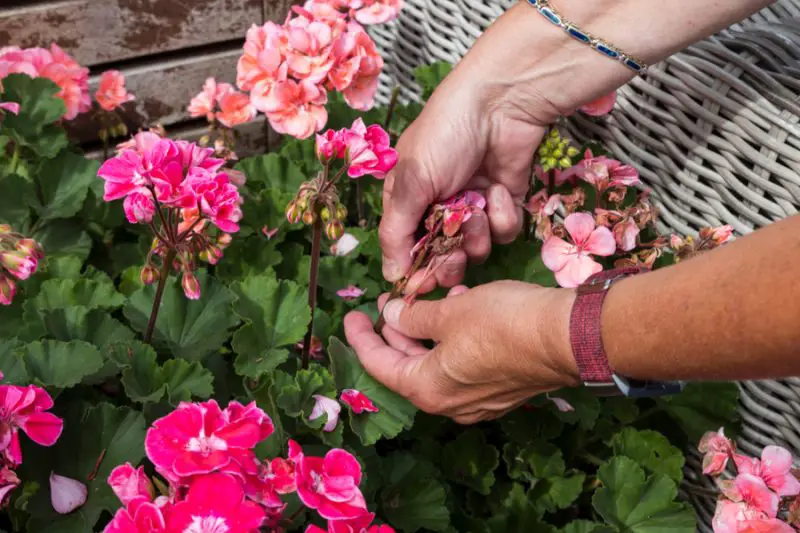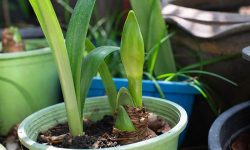Impatiens are among the most beloved flowering plants in gardens and containers because of their ability to provide bright, cheerful color in shaded areas. Their vibrant blooms last for months, creating a lush display that can completely transform any corner of your garden. However, to keep these flowers blooming continuously and looking their best, regular maintenance is essential — and one of the most important tasks is deadheading. Many gardeners overlook this simple yet powerful practice, not realizing that it directly affects the plant’s health, growth, and flowering potential.
Learning how to deadhead impatiens correctly can make a remarkable difference in how long and how beautifully your plants bloom. When done the right way, deadheading helps your impatiens produce new flowers faster and maintain a neat, lush appearance. This process encourages the plant to redirect its energy from seed production to new growth, resulting in fuller foliage and healthier blooms. In the following sections, you’ll discover when, why, and how to deadhead impatiens for the most vibrant results.
Why Deadheading Impatiens Is Important

Deadheading impatiens is far more than a simple garden chore—it’s a crucial practice that directly influences how long and how beautifully your plants bloom. Impatiens are naturally prolific bloomers, but once their flowers begin to fade, the plant’s energy shifts from creating new blooms to forming seeds. This process drains the plant’s strength and results in fewer blossoms and weaker growth. By removing spent flowers, you allow the plant to redirect that energy back into producing new buds, maintaining a steady display of vibrant color and healthy foliage throughout the entire growing season.
This process also plays an essential role in keeping your impatiens disease-free. Dead or decaying flowers tend to retain moisture and create the perfect environment for fungal problems like botrytis and powdery mildew. These infections can spread quickly in humid climates or densely planted areas, affecting not only the flowers but also the stems and leaves. When you regularly deadhead, you eliminate potential breeding grounds for disease and improve air circulation around the plant, keeping it strong and resistant to stress. Clean plants are healthier plants, and healthier plants always produce more blooms.
Aesthetically, deadheading makes your impatiens look neat, full, and well-tended. Without it, the plants can appear scraggly or uneven as old flowers turn brown and hang limply among new ones. Removing these spent blossoms helps maintain a compact shape and encourages bushier growth, especially in varieties planted in containers or hanging baskets. Moreover, consistent deadheading extends the blooming period well into the fall, ensuring your impatiens stay colorful until frost arrives. In short, regular deadheading keeps your plants lively, vigorous, and bursting with blossoms from spring through late autumn.
When to Deadhead Impatiens
Knowing the right time to deadhead impatiens is essential if you want to maintain their continuous blooming and lush appearance. Impatiens typically bloom from late spring until the first frost, producing countless flowers during that time. The ideal moment to deadhead is when a blossom begins to fade, wilt, or lose its bright color. You don’t need to wait until the flower turns brown or falls off on its own, as by then the plant has already started directing energy toward seed development. Acting early ensures that the plant stays focused on producing new flowers instead of wasting energy on old ones.
It’s best to inspect your impatiens regularly—ideally every few days during the growing season. In warm and humid weather, blooms can fade quickly, so staying attentive helps you catch the right moment to deadhead. Morning or late afternoon are the most suitable times to perform this task because the plant is less stressed and the sunlight isn’t too intense. Deadheading during these cooler hours helps minimize moisture loss and allows the plant to recover faster. If you keep your impatiens in containers or hanging baskets, it’s especially important to check them often since confined roots and faster drying soil can speed up the bloom cycle.
Another helpful guideline is to increase deadheading frequency as the season progresses. In midsummer, impatiens tend to grow rapidly, producing many flowers that quickly overlap and fade. Removing the old blooms two or three times a week encourages steady new growth. For garden beds with many impatiens, you can schedule a light deadheading session weekly and a more thorough check every two weeks. This routine not only enhances flowering but also promotes stronger stems and a balanced, compact shape that keeps your impatiens looking vibrant until the cold sets in.
How to Deadhead Impatiens Step by Step
Learning the correct technique for deadheading impatiens is key to keeping your plants vigorous and full of blooms. The process itself is simple, but precision and consistency matter. Start by examining your plant closely to identify spent flowers—these are the blossoms that look wilted, faded, or drooping. Follow the flower stem down to where it meets a healthy leaf node or a new bud. Use your thumb and forefinger to pinch the stem just above that node, or use clean, sharp scissors if the stem is thick or woody. Removing the old bloom at this point encourages new growth and prevents the plant from producing seeds, which would otherwise slow down flowering.
After pinching off the spent blooms, check for any damaged or yellowing leaves. Removing these at the same time keeps the plant tidy and reduces the risk of disease. It’s important to avoid tearing the stems, as rough handling can cause small wounds that invite fungal infections. Instead, make smooth, clean cuts. If you’re working with a large bed of impatiens, move systematically across the plants, inspecting each one closely. This ensures that no fading blooms are left behind, which could hinder the plant’s energy flow and slow down bud production.
Once the deadheading is complete, water the plant deeply to help it recover from the trimming. If you’re growing impatiens in pots or hanging baskets, make sure excess water drains freely to prevent root rot. Applying a mild, balanced liquid fertilizer afterward can boost the plant’s energy for producing new buds. Within a few days, you’ll notice fresh green shoots and small flower buds emerging. Regularly repeating this step-by-step process every week or two keeps your impatiens blooming vigorously and looking lush throughout the growing season.
Care for Impatiens after Deadheading
Watering
Proper watering after deadheading is crucial for helping impatiens recover and resume vigorous blooming. Once you remove the spent flowers, the plant redirects its energy to developing new shoots and buds. During this time, consistent soil moisture is essential. Water your impatiens deeply so that the moisture reaches the root zone, but avoid soaking the soil. Soggy conditions can suffocate roots and cause fungal issues like root rot. The goal is to keep the soil evenly moist — neither too dry nor too wet. In containers or hanging baskets, water until you see it draining from the bottom, ensuring the entire root system is hydrated.
It’s best to water early in the morning or late afternoon when the sunlight is gentler, allowing the plant to absorb moisture efficiently. This routine also helps prevent leaf scorch and rapid evaporation during the hottest part of the day. If you notice the soil drying out quickly, adding a layer of organic mulch around the base can help retain moisture and regulate soil temperature. Consistent watering encourages strong root growth, steady bud development, and prolonged flowering after each deadheading session.
Fertilizing for New Growth
After deadheading, impatiens benefit from a balanced fertilizer to support their renewed growth and flowering cycle. Removing faded blooms stimulates the plant to produce new buds, which requires a steady supply of nutrients. A water-soluble fertilizer with a balanced N-P-K ratio such as 10-10-10 or 20-20-20 works effectively. Dilute it according to the label instructions and apply every two weeks during the growing season. If you prefer organic options, compost tea, fish emulsion, or liquid seaweed are excellent choices that gently feed the plant while improving soil health.
Be cautious not to overfertilize, as too much nitrogen can lead to lush green foliage with fewer flowers. Impatiens thrive when nutrients are applied in moderation and evenly throughout the season. Feeding after deadheading provides the plant with the strength to produce multiple rounds of blooms, ensuring a consistent display of color. The combination of proper nutrition and pruning keeps your impatiens healthy, compact, and full of vibrant flowers for months.
Light and Temperature Management
After deadheading, maintaining the right light and temperature conditions is essential to help impatiens recover quickly and continue blooming. These plants prefer bright, indirect light or partial shade, thriving in environments protected from harsh midday sun. Too much direct sunlight can scorch their delicate leaves, while too little light may lead to leggy growth and reduced flowering. If you’re growing impatiens outdoors, ensure they receive at least four to six hours of gentle morning or late-afternoon light. Indoor or shaded impatiens should be placed near a bright window but shielded from heat buildup.
Temperature control also affects how well impatiens bounce back after pruning. They grow best between 60°F and 75°F (15°C to 24°C). Avoid sudden temperature drops or exposure to cold drafts, as stress can delay new bud formation. During heat waves, water more frequently and provide shade cloth if necessary to prevent wilting. Balanced light and stable temperatures promote strong, steady regrowth, ensuring your impatiens continue to flourish beautifully after every deadheading cycle.
Pest and Disease Prevention
Once impatiens are deadheaded, their tender new shoots can attract pests and pathogens, so post-pruning inspection is vital. Look closely at the undersides of leaves and around stems for aphids, spider mites, or whiteflies. These insects feed on plant sap and can weaken the impatiens over time. If detected early, a simple rinse with water or the use of insecticidal soap can control mild infestations. Neem oil is another natural solution that repels pests while being gentle on the plant. Maintaining proper airflow between plants also helps discourage pests from settling in dense foliage.
Disease prevention is equally important after deadheading. Avoid overhead watering to reduce the risk of fungal infections such as powdery mildew or botrytis. Instead, water at the soil level to keep the leaves dry. Remove any yellowing or damaged foliage to maintain good air circulation and overall plant health. Consistent monitoring ensures that minor issues are caught before they spread. By integrating pest control and disease prevention into your post-deadheading care routine, you help your impatiens remain resilient, glossy, and full of blooms.
Encouraging Regrowth and Bloom Continuity
After completing deadheading and initial care, the focus shifts to encouraging strong regrowth and maintaining a continuous flowering cycle. Impatiens naturally respond to trimming by sending out new shoots from leaf nodes below the cut areas. To maximize this response, keep the soil fertile and moist, and continue to provide indirect sunlight. Within one to two weeks, you should see fresh buds forming, signaling that the plant is ready for another burst of color. Supporting this stage with consistent watering and light feeding helps sustain the rhythm of growth and blooming.
You can further encourage compact, bushy growth by lightly pinching back the new tips once they reach a few inches long. This simple technique promotes branching and prevents the plant from becoming leggy. As the new flush of flowers begins to open, resume your regular deadheading schedule to keep the cycle going. This continuous care approach — pruning, feeding, and encouraging new shoots — ensures your impatiens remain dense, colorful, and full of life from early spring through late autumn.
Signs Your Impatiens Need Deadheading Again
Recognizing when your impatiens need another round of deadheading is crucial to maintaining continuous growth and abundant blooms. The most obvious sign is the presence of fading or wilting flowers. When the petals begin to lose their color and droop, the plant has started channeling energy toward seed formation rather than new blooms. This shift in energy results in fewer fresh flowers and slower overall growth. By identifying these fading blossoms early, you can act quickly to remove them before the plant diverts too many resources away from flowering. Regular observation, especially during peak summer, helps you stay ahead and ensures your impatiens never go long without rejuvenation.
Another important indicator is the overall appearance and density of the foliage. When impatiens have too many old blooms, their leaves may start looking dull or sparse. The plant’s shape might become uneven, with fewer buds forming near the top or center. If you notice that the growth looks tired, or that flowering has slowed noticeably, it’s time to deadhead again. Sometimes, even if the flowers look partially fresh, removing older ones can trigger new bud development. Frequent deadheading — typically every one to two weeks during the growing season — maintains the plant’s rhythm of renewal and flowering.
In addition to flower condition and foliage texture, the general health of the plant offers clues. Impatiens that need deadheading often display slower growth and may produce fewer leaves. The lower portions of the stems can become bare as energy shifts upward to older blooms. Regularly trimming spent flowers restores balance by stimulating growth from the base, creating a fuller appearance. If you’re maintaining potted impatiens or those in hanging baskets, check even more frequently, as these tend to dry out faster and complete bloom cycles sooner. Consistent awareness and timely deadheading keep your impatiens lush, balanced, and bursting with blossoms throughout the entire season.
Common Mistakes When Deadheading Impatiens
Removing Too Much at Once
One of the most common mistakes gardeners make when deadheading impatiens is removing too many flowers or stems in a single session. While trimming heavily may appear to tidy the plant quickly, it actually disrupts its natural growth rhythm. Impatiens rely on their stems and foliage to generate energy through photosynthesis, and when too much of that green tissue is removed, the plant’s energy production drops sharply. As a result, you may notice slower bud formation, smaller leaves, and fewer blooms in the following weeks. This kind of stress can even make impatiens more vulnerable to temperature fluctuations and pests.
To prevent this, deadhead lightly but regularly. Remove only the blooms that are clearly wilted or discolored and leave healthy buds intact. A consistent schedule of weekly light trimming encourages steady renewal without exhausting the plant. For large garden beds, rotate your trimming — work on different sections each week instead of cutting everything at once. This gradual approach allows the plant to continuously produce new blooms and maintain lush foliage without suffering from pruning shock. A balanced rhythm of removal and regrowth is key to vibrant, long-lasting impatiens.
Cutting Too Close to the Leaf Node
Another frequent mistake is cutting too close to the leaf node while removing spent flowers. The leaf node is a critical area where new buds, shoots, and leaves form. If you cut too close or damage this junction, you risk interrupting future growth or causing dieback in that stem section. This error can lead to bare stems, irregular blooming, and an overall sparse appearance. Many gardeners unintentionally harm their impatiens this way when using dull or unclean tools that crush instead of cleanly slicing the stem.
To avoid this, always leave a small section—around half an inch—of stem above the node when pruning. Use sharp, disinfected scissors or pruning shears to make smooth cuts without tearing tissue. When in doubt, it’s better to leave a little extra length rather than trimming too short. The small stub left behind will dry naturally and seal off the wound, preventing disease and encouraging new branches to form. Paying attention to these tiny details helps your impatiens remain dense, symmetrical, and continuously blooming.
Ignoring Spent Buds and Seed Pods
A very common oversight when deadheading impatiens is removing only the faded petals and ignoring the seed pods developing beneath them. Once a flower fades, the plant begins forming a seed capsule at its base. These pods consume a significant amount of the plant’s energy as they mature. If left untouched, the impatiens will shift its focus from producing new blooms to maturing these seeds, which dramatically reduces flower output. Over time, this can make the plant look sparse and tired, even though its foliage remains green.
To correct this, check beneath each wilted bloom for small, round, or elongated pods. Gently pinch or snip them off before they enlarge. This redirection of energy ensures the plant remains in its flowering phase rather than its reproductive one. For hanging baskets or container impatiens, this step is particularly important because limited soil space amplifies the impact of nutrient diversion. Regular removal of both spent blooms and developing seed pods ensures your impatiens remain in constant bloom and maintain their brilliant colors throughout the growing season.
Forgetting to Sanitize Tools
Failing to sanitize tools between deadheading sessions is an often-overlooked mistake that can have serious consequences. Dirty blades can spread harmful bacteria, fungi, or viruses from one plant to another. Even a small infection like botrytis or leaf spot can spread rapidly among impatiens growing close together, leading to discolored leaves and premature dieback. If your scissors or shears retain sap from previously trimmed plants, they can easily transfer disease-causing spores to freshly cut stems, where open wounds provide direct entry points.
To prevent contamination, always disinfect your tools before, during, and after use. A quick wipe with rubbing alcohol, hydrogen peroxide, or a diluted bleach solution is enough to kill pathogens. For large deadheading tasks, clean your tools every few plants. Additionally, store your equipment in a dry place to avoid rust or residue buildup. Clean, sharp tools not only keep your impatiens disease-free but also ensure neat cuts that heal quickly. Good sanitation habits are essential for maintaining a healthy, thriving garden.
Neglecting Aftercare
Even if deadheading is performed perfectly, many gardeners forget to provide proper aftercare, which limits the plant’s recovery and blooming potential. Once trimmed, impatiens need time and support to redirect energy into new growth. Without adequate watering or feeding afterward, they may appear dull and fail to produce strong new buds. Inconsistent aftercare can also lead to yellowing leaves or drooping stems, especially during hot, dry spells. Impatiens thrive on steady moisture and nutrients to fuel their continuous bloom cycle.
To keep them vigorous, water the plants thoroughly right after deadheading to rehydrate the roots. Apply a mild, balanced fertilizer within a few days to replenish nutrients lost during pruning. Protect them from harsh afternoon sun to minimize stress while new buds form. For container impatiens, check soil moisture daily, as pots dry out faster than garden beds. Proper post-deadheading care ensures that the plant bounces back quickly, producing abundant flowers with rich color and healthy foliage. This follow-up attention turns each pruning session into a step toward stronger, longer-lasting blooms.
Benefits of Regular Deadheading Impatiens
Regular deadheading offers numerous benefits that go beyond simply keeping impatiens looking neat. When you remove faded or wilting blooms, the plant stops channeling energy toward seed formation and redirects it into producing new buds and fresh growth. This shift encourages a continuous blooming cycle, ensuring that your impatiens stay vibrant and colorful from spring until the first frost. By maintaining this steady rhythm of renewal, you create a lush, long-lasting floral display that brightens even the shadiest corners of your garden. Regular deadheading also improves the plant’s structure, keeping it compact and bushy instead of allowing it to become thin and leggy.
Beyond aesthetics, deadheading plays a crucial role in strengthening plant health. Removing decaying flowers prevents the buildup of moisture and organic debris that often harbor fungal diseases such as botrytis or powdery mildew. Cleaner plants benefit from better air circulation and are less likely to suffer from rot or pest infestations. Additionally, frequent trimming stimulates branching, resulting in more stems capable of producing flowers. Over time, this leads to fuller, more balanced plants with richer, longer-lasting blooms. Healthy impatiens that receive consistent deadheading not only perform better but also recover faster from environmental stress, such as heat or wind exposure.
The aesthetic reward of regular deadheading is immediate and lasting. Impatiens that are routinely pruned look fresh, vibrant, and well-tended, enhancing the overall appeal of your garden. Their uniform shape and rich color make them standout features in beds, borders, and containers. This consistent care also promotes longevity, as impatiens that are encouraged to renew themselves continuously remain active and vigorous far longer than neglected ones. In essence, regular deadheading is the simplest, most effective way to keep your impatiens healthy, strong, and blooming beautifully throughout the entire growing season.
How to Rejuvenate Overgrown
If your impatiens have become overgrown, leggy, or stopped blooming because deadheading was skipped, don’t worry — they can still be revived with the right approach. The first step in rejuvenation is to perform a light but thorough pruning. Begin by removing all the faded flowers, seed pods, and any yellowing or damaged leaves. Then trim back the stems by one-third of their length, making clean cuts just above a healthy leaf node. This encourages new branching and stimulates the plant to produce fresh buds. After trimming, clear away any fallen plant material from the soil surface to prevent fungal buildup and improve air circulation. Within a week or two, you should begin to see new shoots emerging as the plant redirects its energy into recovery.
Once pruning is complete, provide consistent moisture to help the impatiens rebuild strength. Water deeply so that the entire root zone is saturated, but avoid letting the soil become soggy. Follow up with a diluted, balanced fertilizer, ideally a liquid feed with an equal N-P-K ratio such as 10-10-10. This helps replenish nutrients that the plant uses during regrowth. In warm weather, add a layer of organic mulch around the base to maintain soil temperature and retain moisture. For container-grown impatiens, check daily to prevent the soil from drying out completely, as confined roots dry faster and can quickly stress the recovering plant.
Finally, adjust the light conditions to support rejuvenation. Impatiens thrive in bright but indirect sunlight, so move potted plants to a spot with filtered light if they’ve been in deep shade. Too much direct sunlight can scorch tender new leaves, while too little can delay new flower formation. With proper pruning, watering, and feeding, neglected impatiens typically bounce back within three to four weeks. Regular deadheading afterward will help maintain their renewed health and ensure that they bloom consistently for the rest of the growing season.
Seasonal Deadheading Tips for Maximum Blooms
To keep impatiens blooming at their fullest potential throughout the year, it’s important to adjust your deadheading routine to match each season’s growing conditions. In early spring, when impatiens are establishing new growth, deadheading should be gentle and minimal. Focus on removing any weak or damaged stems left from winter dormancy while encouraging branching by pinching off the growing tips. This early shaping helps create a dense, rounded plant structure that will support heavy flowering later in the season. It’s also the ideal time to start a regular feeding and watering schedule, ensuring the plant has enough energy for vigorous bloom development once temperatures rise.
During the height of summer, impatiens enter their most active blooming phase, producing flowers continuously. At this stage, deadheading becomes more frequent — ideally every few days. The combination of heat and humidity can cause blooms to fade quickly, so consistent removal of spent flowers prevents the plant from shifting energy into seed production. Morning or evening deadheading is best to reduce stress caused by midday heat. In particularly hot climates, trimming lightly but often keeps impatiens tidy and encourages an endless cycle of buds and blooms. Pairing this with regular watering and biweekly feeding helps the plants maintain vitality despite the demanding conditions.
As autumn approaches and temperatures cool, impatiens begin to slow their growth, but regular deadheading remains essential. Removing faded flowers at this time encourages the final wave of blossoms before frost. You can trim the stems slightly shorter to strengthen the plant’s structure and prepare it for dormancy or overwintering indoors if desired. Maintaining cleanliness around the base of the plants reduces the risk of late-season fungal issues. Even in the final weeks of the growing season, consistent deadheading ensures your impatiens finish strong — blooming beautifully right up until the first chill arrives.
FAQs About Deadheading Impatiens
How often should I deadhead impatiens?
You should deadhead impatiens every few days during their active blooming season, especially in warm weather. Regular removal of faded flowers stops seed development and helps the plant focus its energy on producing new buds, keeping your impatiens blooming continuously and looking vibrant all season long.
Can I use my fingers to deadhead impatiens?
Yes, impatiens have soft stems that can easily be pinched by hand. Gently remove the wilted flower just above a healthy leaf node or new bud. Be careful not to tear the stem, and wash your hands afterward to avoid spreading pests or fungal spores between plants.
What happens if I don’t deadhead my impatiens?
If you skip deadheading, impatiens will form seeds, signaling the plant to stop producing new blooms. This redirection of energy leads to fewer flowers, weaker growth, and a less attractive appearance. Over time, your plant may become leggy and lose its compact, colorful form.
Should I fertilize after deadheading?
Yes, fertilizing after deadheading restores nutrients needed for new flower and leaf growth. Use a balanced, water-soluble fertilizer like 10-10-10 or 20-20-20 every two weeks during active growth. Always water beforehand to prevent root burn and support steady, healthy regrowth.
Can I deadhead impatiens in hot weather?
Yes, but deadhead during the cooler hours of early morning or late afternoon. Avoid trimming under harsh midday sunlight to prevent plant stress. Afterward, water deeply to rehydrate the roots and encourage new bud formation, keeping your impatiens blooming beautifully even in high heat.
Conclusion
Deadheading impatiens is a simple yet powerful way to keep your garden bursting with color all season long. By regularly removing faded blooms, you encourage nonstop flowering, stronger growth, and a healthier plant overall. This small act of care prevents seed formation, reduces disease risk, and promotes lush, compact foliage. Whether grown in beds, pots, or hanging baskets, impatiens reward consistent attention with vibrant, lasting beauty. With proper watering, light, and feeding after each trim, your impatiens will stay full of life, transforming even the shadiest corners into a dazzling floral display.






